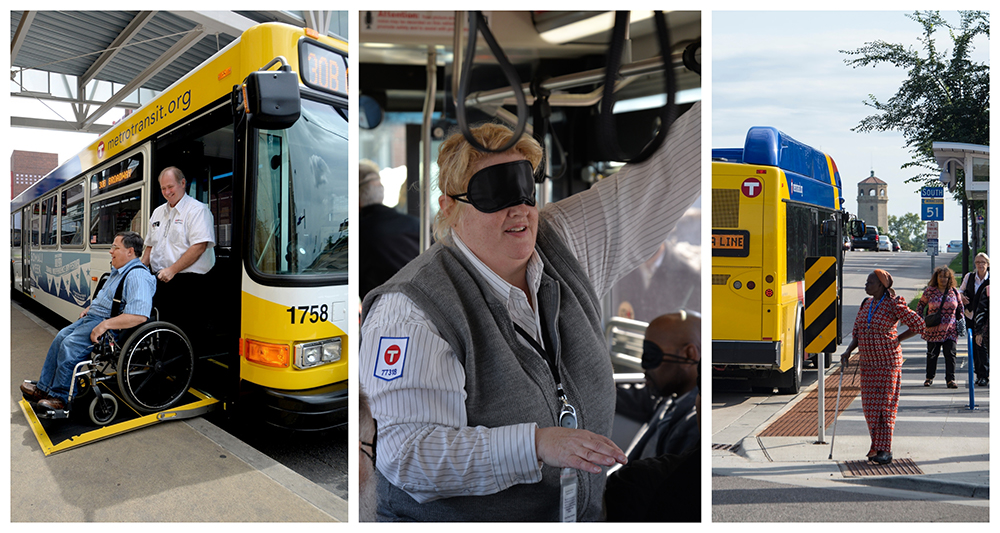
From General Manager Brian Lamb
As an organization, we talk a lot about how important transit is to providing access to opportunity. That’s particularly true for people with disabilities who rely on transit to live a full and independent life.
Because we want transit to be inclusive, we continually ask ourselves whether we’re doing enough to welcome everyone who wants to ride, regardless of their abilities.
We have good reason to think about what we’ve done and what we’ve set out do this week, as the Americans with Disabilities Act reaches its 28th anniversary. There’s a lot to be proud of, too.
Over the past year, we’ve installed level concrete pads at dozens of bus stops to make boarding easier for individuals who use mobility devices. As we’ve installed new and replacement shelters, we’ve also addressed curbs and other physical barriers that make it harder to get to and around these stops.
Bus operators going from part- to full-time recently began taking classes in which they use blindfolds and ear protection to experience what it’s like to board and ride the bus without being able to see or hear.
Go-To Card readers on all our rail stations and buses have been equipped with audio cues while keyboards on A Line ticket vending machines were designed to better serve individuals with visual impairment.
Our new Text for Safety service allows suspicious behavior to be reported through text message, something that is especially useful for people who are deaf, blind or hard of hearing.
And just last month, we made it simpler to get a Limited Mobility fare card by removing the requirement to get a special endorsement on a driver’s license or state ID.
Our fleet has also steadily become more accessible over the years, with level boarding at light rail stations, buses with roomier interiors on our rapid bus lines and a nearly-completed phase out of high-floor buses.
Our system will become even more accessible in the years ahead, too.
Responding to customer feedback, future light rail trains will have a more spacious seating arrangement that provides more room for mobility devices.
A new station at I-35W and Lake Street will replace a highway-level stop once accessible only by a steep set of stairs with a modern, two-level facility equipped with elevators.
Transit Information hopes to test tactile maps, high contrast signs and larger text at select sites to invite feedback and determine if such features should be applied more broadly.
Our accessibility improvements directly benefit the roughly 1 in 10 regular route customers who reported having a disability in the Council’s latest survey of regional travelers.
But they also make our system better and easier for anyone who rides with us, including children, the elderly and caretakers traveling with strollers.
We’ve made a lot of progress in the nearly three decades since the ADA became law, and look forward to making even more improvements in the years ahead.
Learn more about Metro Transit’s accessibility features